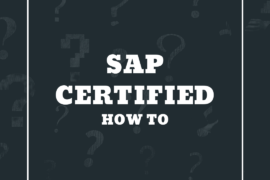For me, it is simply unacceptable that an SAP professional does not invest the least amount of time in this incredible tool called Linkedin.
Linkedin is a professional social network, where professionals from all over the world can connect and exchange information.
In addition to creating a network of contacts with people in your area, the vast majority of great opportunities in the SAP area (and in other areas) are offered through Linkedin.
I would say that in the course of my professional life, about 95% of the job offers I received were through Linkedin.
I have already received proposals to work on different types of projects around the globe through this social network.
Of course, it was not by chance.
That’s exactly what I want to talk about in this post.
What to do?
There is absolutely no point in having an outdated LinkedIn profile.
Linkedin must be a true copy of your resume.
All of your projects, languages , and experiences must be there.
With each new course or each new project, you must update it.
I would say that this is the least that a professional needs to do.
Updating Linkedin regularly will not consume more than 1 hour a year of your time.
Do not forget to detail what you did for each place you passed, explaining the technologies (modules) that you had the opportunity to work on, what was the purpose of the project and what were its main functions.
Also, a second important detail (if your primary language is not English) is to always have a profile in the English language as well.
It is extremely easy to have the profile in multiple languages on Linkedin (I will not explain how to do it here, as there are several materials with step by step on Google), you will just have to have the same information that you already have on Linkedin in your native language translated into English (or simply copy this information from your CV in English).
English is the language of the business world and should never be left out, especially in the technology market.
After having your profile in English and your native language, you only need to update it whenever you change companies/projects.
This work will make you (and a lot) increase the number of good proposals to be received from recruiters.
Conclusion
I am sure you will remember SAP Steps after updating your LinkedIn when you start receiving more job offers.
Don’t waste time and follow our tips right now!
If you liked this post, be sure to subscribe to our newsletter to receive first hand the next posts.
If you have any suggestions (including subjects you would like to read about), feel free to send an email to sapsteps@sapsteps.com.
A big hug,
Bruno César



